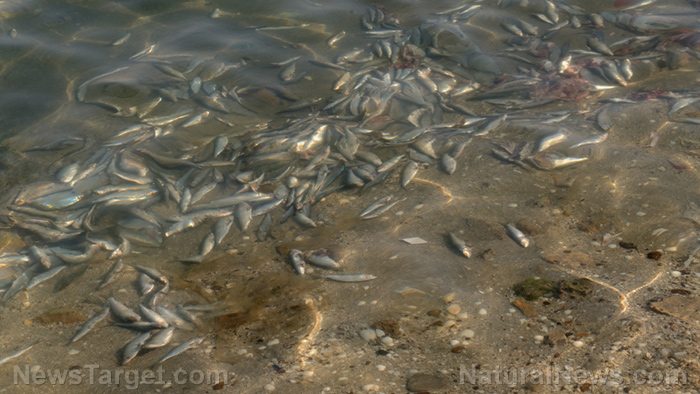Scientists successfully remove first murder hornet nest found in the US
11/05/2020 / By Divina Ramirez

The first nest of “murder hornets” in the U.S. was destroyed Saturday shortly after entomologists from the Washington State Department of Agriculture (WSDA) located it on private property near Blaine in Whatcom County, Washington. State entomologists have been tracking the massive insects, which were first sighted in the area in late 2019, for months.
To find the nest, entomologists trapped four live murder hornets and attached radio trackers to the insects with dental floss. The hornets led them to the nest, which was the size of a basketball. It sat in the hollow portion of a tree, some seven feet above the ground.
WSDA crews wore thick protective suits and face shields before stuffing the nest’s exits with foam and vacuuming out between 100–200 murder hornets. The crews also wrapped the tree in plastic wrap and gassed it with carbon dioxide.
The next step now will be to cut down the tree to search for eggs or larvae that may have survived. State entomologists also plan to scour the region for more nests in case the queen departed from the old nest to start new ones.
“While this is certainly a morale boost, this is only the start of our work to hopefully prevent [murder hornets] from gaining a foothold in the Pacific Northwest,” said WSDA managing entomologist Sven Spichiger.
Murder hornets, an invasive and dangerous insect
More properly known as the Asian giant hornet (Vespa mandarinia), murder hornets can grow up to 1.75 inches in length. They can normally be found throughout South and East Asia.
Since their first sighting in Washington, experts have been on high alert for the insect. For starters, the insects are so named because of their excruciating sting, which has been described as feeling like a hot nail being driven into flesh. (Related: In China, giant hornets kill 28 and injure hundreds more.)
Murder hornets can also “spit” venom from their stingers, which can cause serious eye injury. The stingers are also long enough to pierce through the protective gear that beekeepers wear.
But while its venom is less toxic than a bee’s, the murder hornet packs a much bigger dose. Unlike bees, these insects can also sting humans repeatedly and not die.
The biggest threat that murder hornet’s post, however, is to bees and the beekeeping industry. These invasive predators feed on bees, whose populations are already threatened by environmental challenges like habitat loss and widespread use of bee-killing pesticides in commercial farming.
Murder hornets are social hornets, meaning they coordinate their attacks on bee colonies. In fact, they are the only known wasp species observed to do so.
Their attacks happen in three phases. First, the hornets attack individual bees from a target hive, ripping them to pieces and feeding those to hornet larvae in their own hive. Next, dozens of hornets will attack the hive. Just 15–30 hornets can kill between 30,000–50,000 bees. Finally, the hornets will move into the defeated hive and eat the remaining bee larvae and pupae.
Unfortunately, many species of honeybees have no natural defense against murder hornets. Only Japanese honeybees (Apis cerana japonica) are known to have evolved a unique defense mechanism against hornets. When a hornet enters a Japanese honeybee hive, the bees form into a defensive, they’ll swarm around individual hornets. They’ll then create a buzzing ball and generate heat by vibrating their flight muscles. With this, the hornet is essentially roasted alive while the bees, which can withstand higher temperatures, remain essentially unharmed.
Because of the threat that murder hornets pose to both bees and humans, experts are quick to remove hornet nests. Unfortunately, murder hornets are suited to conditions in the Pacific Northwest.
Nonetheless, operations like those carried out by the WSDA suggest that there is still time to stop these invasive insects from creating new colonies where they shouldn’t.
Learn more about the murder hornet and the impact of invading pests at Environ.news.
Sources include:
Submit a correction >>
Tagged Under:
Asian giant hornets, bees, Ecology, ecosystem, environment, harvest, honey bees, murder hornets
This article may contain statements that reflect the opinion of the author
RECENT NEWS & ARTICLES
COPYRIGHT © 2017 ECOLOGY NEWS





















